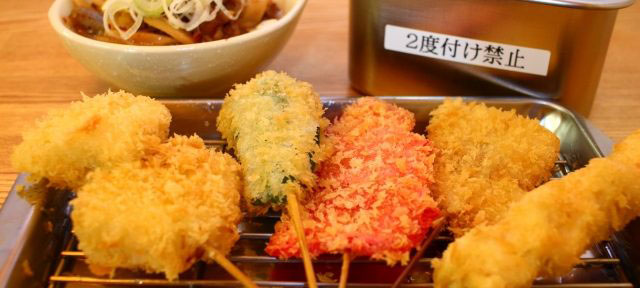Tag: Kushikatsu

Mom’s Home Cooking: Japanese Hot Pot (鍋 / Nabe)
Read more: Mom’s Home Cooking: Japanese Hot Pot (鍋 / Nabe)Nabemono, or Nabe for short, is a hearty Japanese dish that was traditionally prepared in…

B-kyu Gurume: Kushikatsu from Shinsekai, Osaka
Read more: B-kyu Gurume: Kushikatsu from Shinsekai, Osaka(source: Just One Cookbook) Have you ever tried Kushikatsu? Kushikatsu, also known as Kushiage, is…
